Cane toad parasites
Like all animals, cane toads suffer from diseases and are infected by a range of parasite species. In the extreme case, these small organisms can be fatal to their host – suggesting that manipulating rates of parasite infection might offer a way to control cane toad numbers. That possibility has encouraged TEAM BUFO to conduct extensive research on the tiny things that live inside cane toads.
When cane toads were brought to Australia (from French Guiana via Puerto Rico and then via Hawai’i), they left behind many of the parasites that attack them in their native range. For example, the people who shipped cane toads from Puerto Rico to Hawai’i were careful to remove large ticks. As a result, those ticks (which are a significant problem for cane toads in their native range) didn’t make it to Australia. This kind of “enemy release” (leaving your natural enemies behind) is a major reason why invasive species thrive in new areas. They don’t have to deal with their old enemies.
Lungworms
But some other types of parasites didn’t get left behind. For example, many cane toads in Australia have lungworms – tiny threadlike worms that live inside the lungs. The adult worms lay eggs that are passed out when the toad produces faeces; those eggs hatch into larvae that breed with each other, and then the next generation of larvae crawl around on the ground looking for a new host to infect. They enter the toad’s body through an opening like the eye socket or the anus.
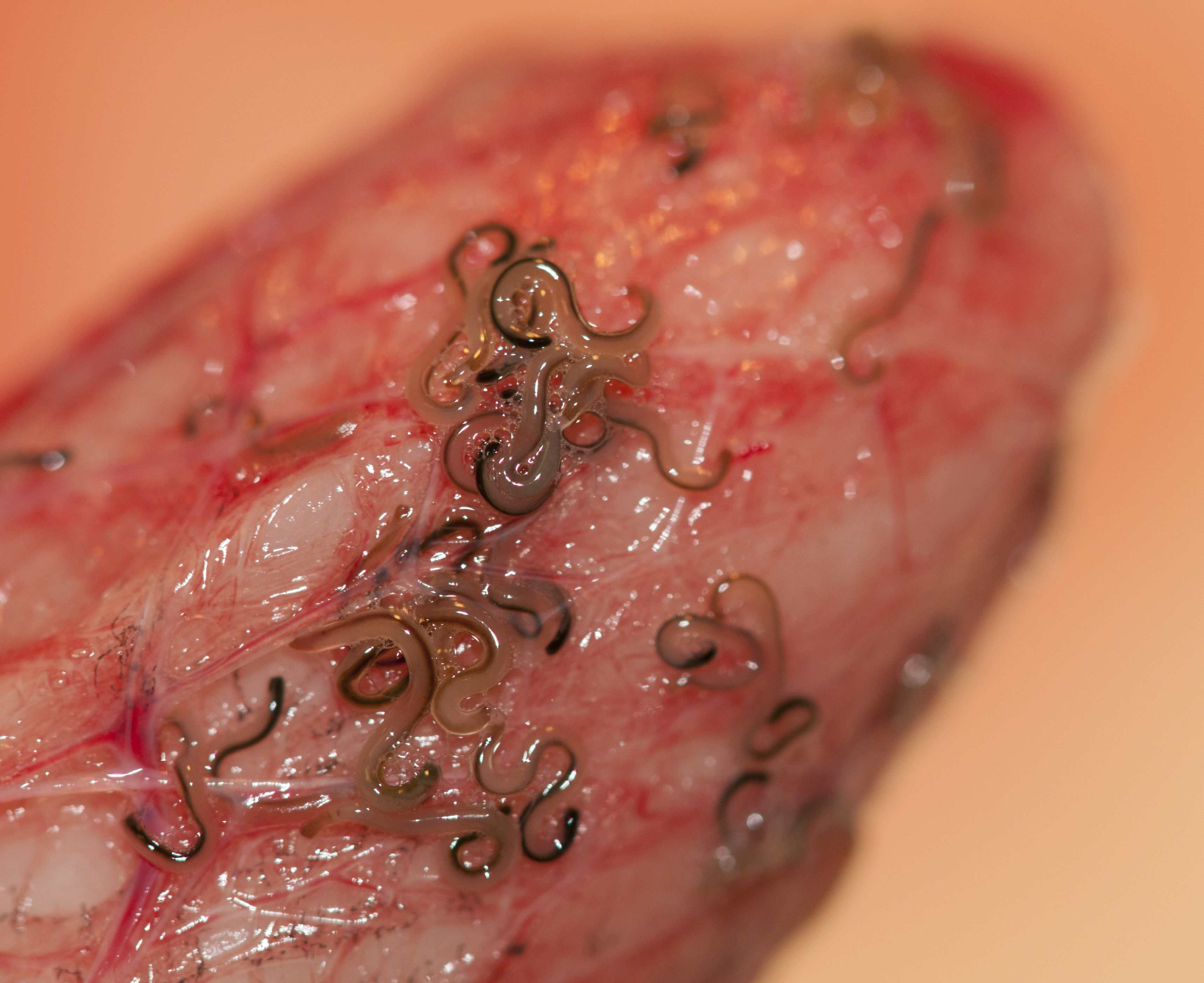
Tiny lungworms inside the lung of a cane toad. The toad's lung has been turned inside-out to show the parasites, that cling to the inside of the lining of the lung. Photo by Crystal Kelehear.
Lungworms occur in cane toads both in in Australia and in their native range (South America); and Australian native frogs have very similar-looking worms inside their lungs as well. The parasites all look about the same, so are they the same species? Did the lungworms in Australian cane toads come to Oz with the original toads, or did they lose their lungworms during that long journey (in the same way that they lost ticks); in which case, the lungworms inside Aussie toads may have been a species that originally lived in Australian frogs, and shifted across to infect toads as well.
The only way to answer that puzzle was to identify the species of lungworms inside cane toads (in Australia and South America) and inside Australian frogs. Sylvain Dubey did this looking at their DNA sequences - the only certain way to distinguish one type of lungworm from another. So Sylvain compared DNA from lungworms found in toads (both in Australia and South America) to that from Australian frogs (mostly from Queensland, where the toads and frogs have lived side-by-side for more than 50 years).
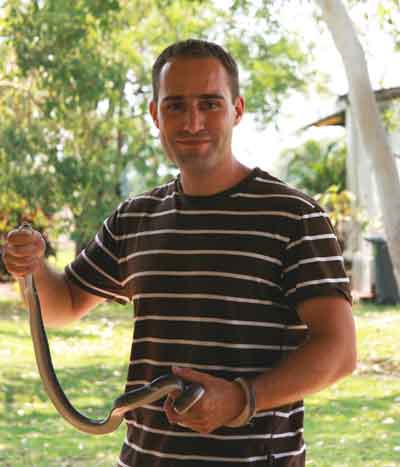
Sylvain Dubey is a geneticist who loves snakes. His research showed that
the lungworms inside Australian cane toads actually came from South
America with the original toads, rather than being opportunistic Aussies
who jumped across to toads from Australian frogs. Photo by Terri Shine.
And the result amazed us.
Scientists have always thought that the cane toads left their native
parasites behind in the process of being moved to Australia - and so, the
lungworms in Australian cane toads were believed to be a species (Rhabdias
hylae) that is common in Australian frogs. This would make it difficult to
use the lungworms to control toads - because if we made the worms more common
or more infective, we'd cause problems for native frogs as well.
But Sylvain's results show that we may not have to worry about this kind of
collateral damage. All of the lungworms that we have found in Australian cane
toads so far are Rhabdias pseudosphaerocephala - a South American
species! So the toads have brought the parasite with them, not picked it up
from the Queensland locals.
And even better, all of the lungworms we have identified from native Australian
frogs are genuine Aussie species - none have been carrying the cane toad's
parasite.
So, could we use the South American lungworms to control toad numbers in Australia? That would require that the toad lungworm can’t infect Aussie frogs - and that looks to be OK, based on the survey results plus our experiments in the lab, where we exposed Aussie frogs to toad lungworms. The frogs' immune systems were able to kill the foreign parasites. The only frog that is at high risk is the Magnificent Tree Frog, from the Kimberley - it is rapidly killed if it encounters the toad's lungworm.
Using lungworms for toad control also requires that that the lungworms have major ill-effects on their hosts. That is difficult to establish. It seems to depend on environmental factors. If conditions are tough - such as a long dry period in the tropics - then infection with lungworms can be devastating for a toad. But if conditions are more favourable, a lungworm infection may not be too much of a problem.
One of the main messages from our lungworm studies is that relationships between hosts and their parasites are complicated – especially in a dynamic system like a biological invasion. For example, we’ve explained above how cane toads are carrying the lungworm across Australia as they invade. When the invasion reaches the habitat of a native frog species that can’t resist the toad lungworm, the result can be devastating. That’s what happened with the Magnificent Tree Frog in the Kimberley. But strangely, the reverse can happen as well – cane toad invasion can reduce not increase the parasite burden of native frogs. Damian Lettoof’s studies in New South Wales showed that frogs have FEWER lungworms after toads invade, not more. The reason is that the native lungworm species – the one that usually infects frogs – gets picked up by toads, but then dies inside the toad, because it’s not the “correct” host. The toad’s immune system recognises and kills the parasite. That leaves fewer lungworm larvae around to infect frogs.
Pentastomes
Lungworms aren’t the only nasty beasts that infect cane toads. Larval pentastomes live inside cane toad lungs as well. The pentastomes are invaders as well – they came to Australia long ago, inside invasive House Geckos that stowed away on boats travelling between Indonesia and Darwin. Native frogs can’t be infected by these parasites, but toads can – and so the invasion of toads has picked up the gecko’s pentastome parasites and is carrying them further across the continent.
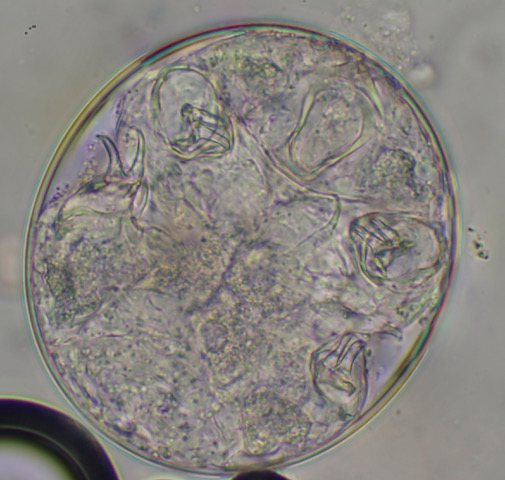
Pentastomes are nasty-looking creatures, even though they are tiny. They have hooks to cling to the lung tissue of their host, as seen in this photograph of a pentastome inside its egg, by Greg Brown.
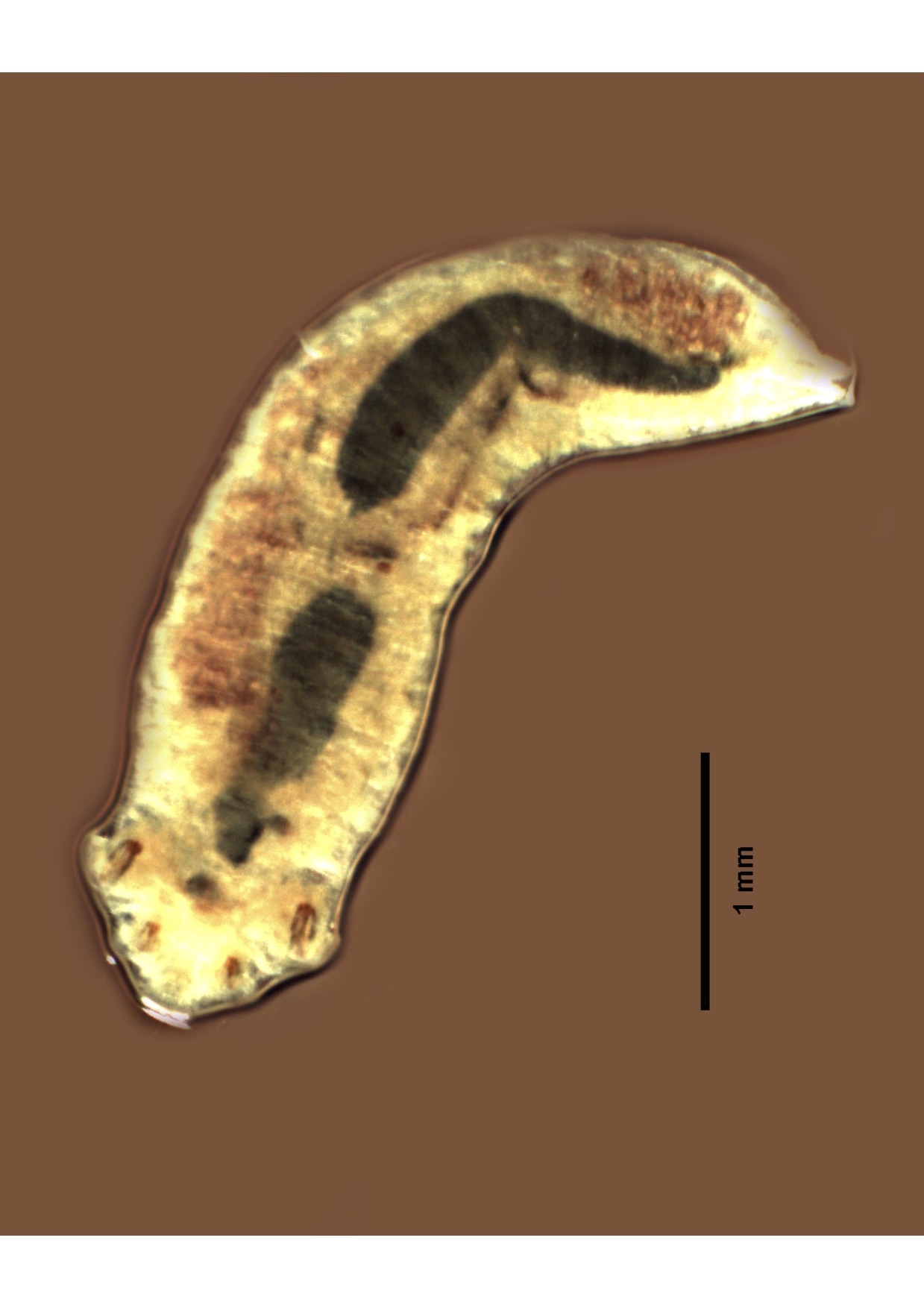
This adult pentastome looks like a small worm. Photograph by Crystal Kelehear.
Amoeba
Another recently-discovered parasite is a type of amoeba that lives inside the toad’s gut. It causes amoebic dysentery, destroying the lining of the gut so that the toad can’t recycle water. As a result, toads infected with the amoeba can be found moving around even during daylight hours, desperately looking for a place to hydrate. In the harsh conditions of the late Dry-season, toads are often killed by this parasite. But when conditions are more favourable, with plenty of food and water, having amoebic infection probably doesn't worry a toad too much.
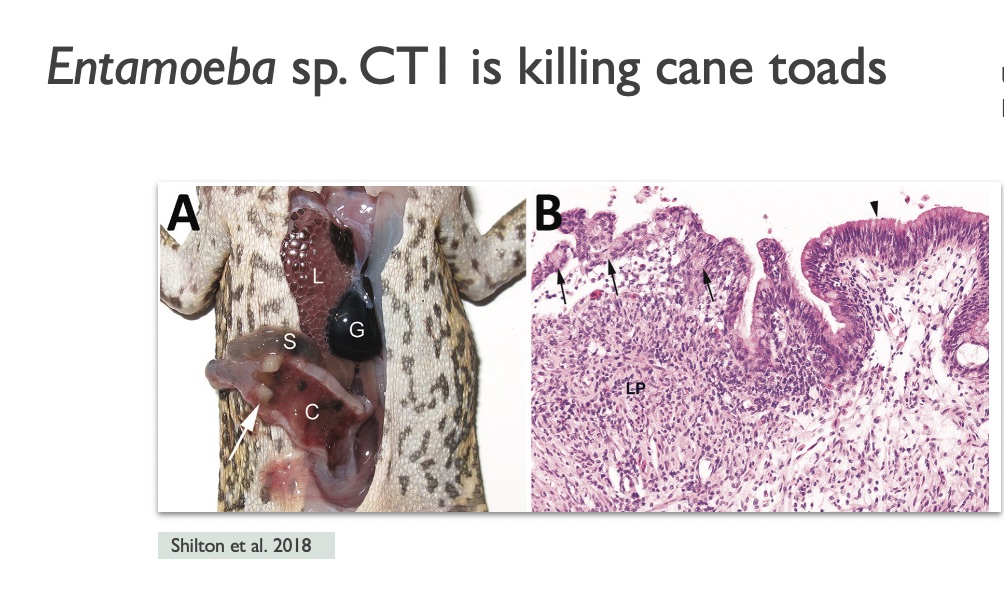
Photos by Phoebe Rivory.
Lethal diseases and parasites offer opportunities for us to control toad numbers, but it takes a lot of research to work out what’s going on. People often find lots of dead and dying toads, and hope that some new disease is about to wipe out cane toads from Australia. But that probably won’t happen. Many of those dying toads have been killed by cold (in the southern part of the range) or have simply starved to death. CSIRO investigated toad viruses but didn’t find any that looked suitable for controlling the pest species. And more recently, research on DNA sequences has revealed some new types of viruses that can attack cane toads. Studies are continuing, but for the moment we don’t have any virus that would be a “magic bullet” for toad control.
One of our main aims with this website is to provide reliable evidence about cane toads in Australia, backed up by scientific research. We haven't put lots of details about that evidence on the main pages, but it's easy for you to get to it. If you want to explore a topic in more depth, just click on Rick's "official" website. You can find literally hundreds of his scientific papers there. And you can download copies of most of those papers on "Google Scholar"; if that doesn't work, just ask us for a copy. Rick's research website
For the full story about the cane toad invasion of Australia, and what we can do about it, read Rick’s book “Cane Toad Wars” (published by University of California Press, 2018). The book is written for the general public, not for scientists, and is aimed at a wide audience. The book can be purchased through online bookstores like Amazon, or you can buy a copy through your local bookstore.
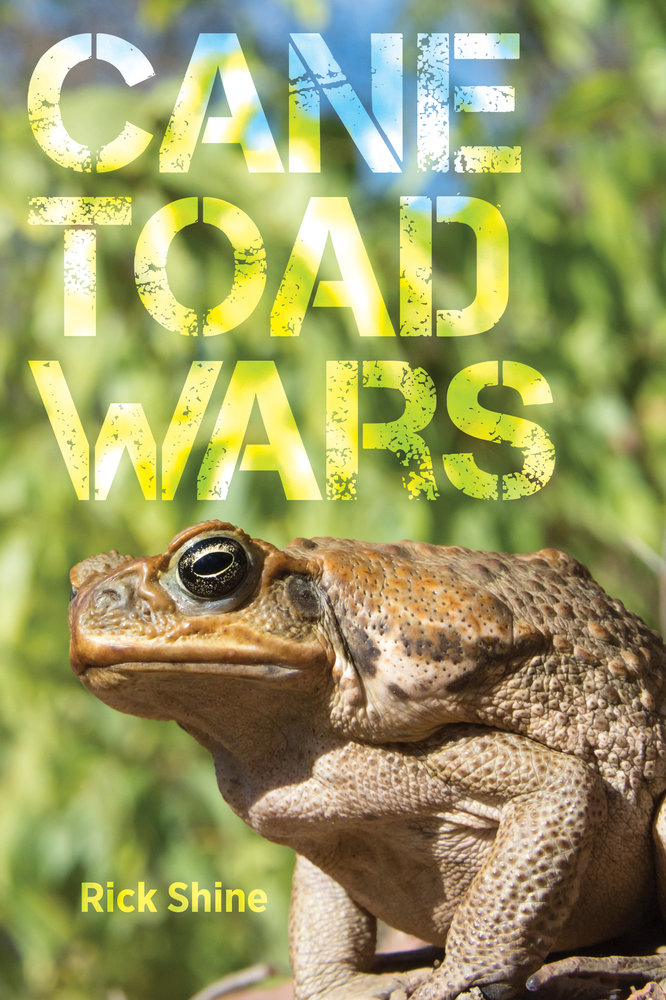
Return to Home Page
